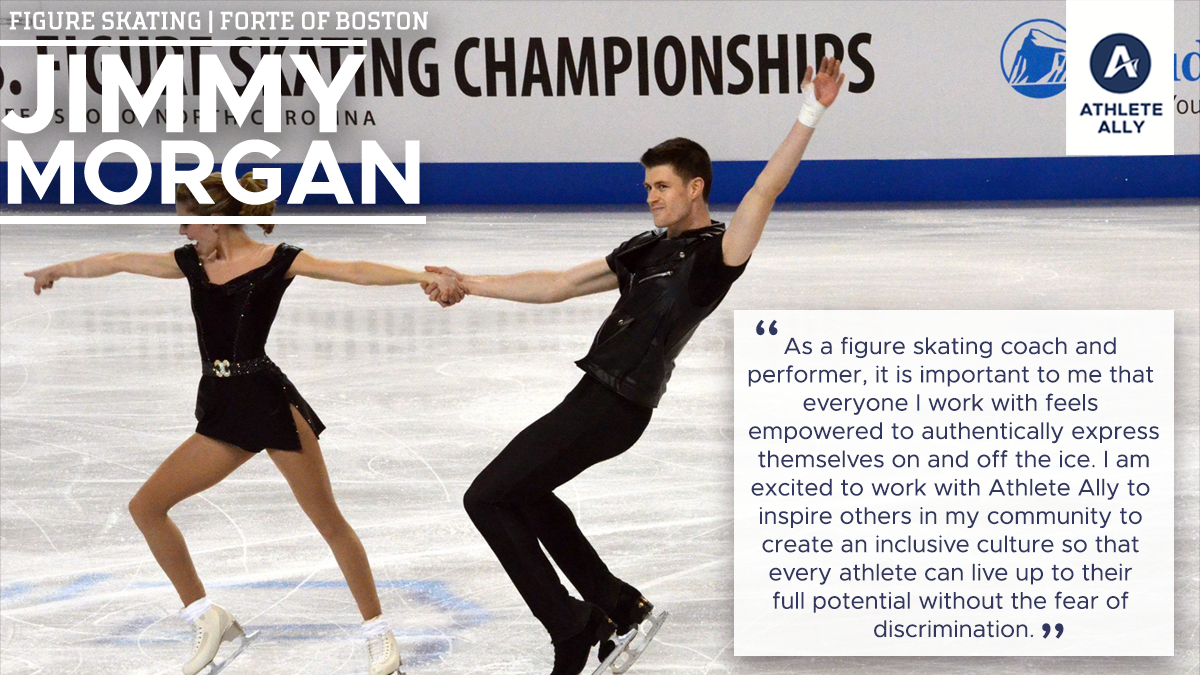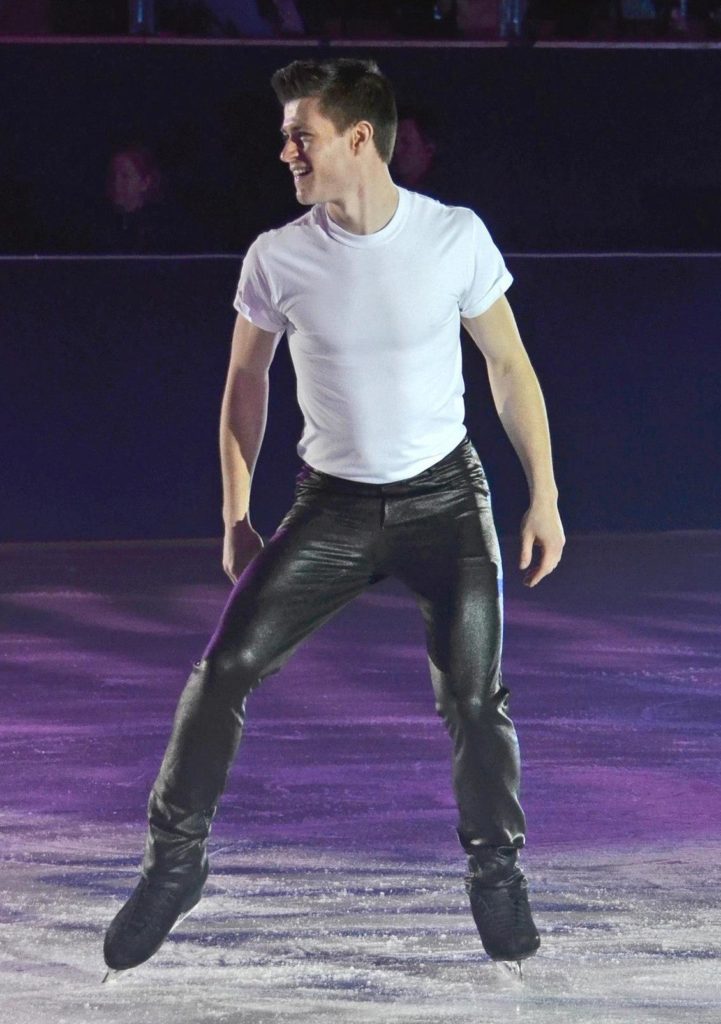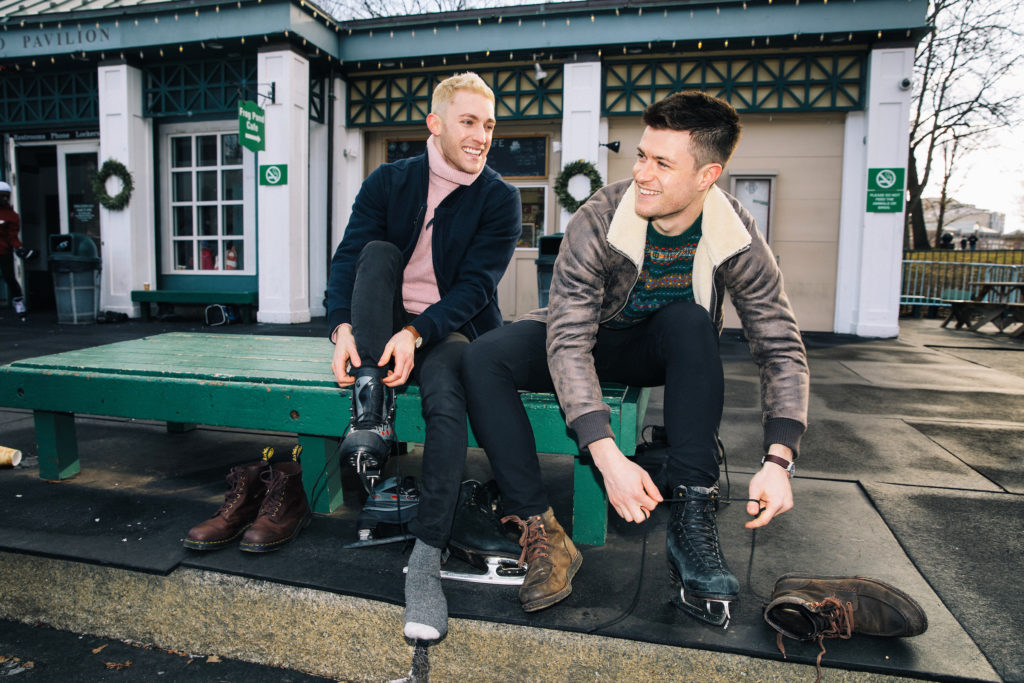Out Gay Figure Skater Jimmy Morgan: I Own My Narrative

By: Jimmy Morgan, Professional figure skater and Athlete Ally Ambassador
“You’re a figure skater? What, are you gay?” Older hockey players laughed as I walked down the hall to practice. I was an 11-year-old kid wondering why figure skating made me gay and why hockey players found that so funny.
This made me think being gay was bad. As I grew older, I had been laughed at and called gay so many times, that I hoped to never be gay.
To my dismay, I started realizing I was attracted to men. Since my life had taught me that being gay led to being made fun of, I suppressed those feelings and started to convince myself that I was straight. On top of that, I didn’t want to represent further proof that every male figure skater is gay. I didn’t want those hockey players to be right.
 When I was 16, I started pairs skating. I thought it was so cool to be part of a team and to be able to perform lifts and tricks impossible for solo skaters.
When I was 16, I started pairs skating. I thought it was so cool to be part of a team and to be able to perform lifts and tricks impossible for solo skaters.
But now, I was expected to perform with my partner, Alex Shaughnessy, and I was told by coaches and judges that our performance would be partially scored on how well we relate to each other. The only way we were taught to showcase that relationship was romantic love or lust. So, I forced myself to play the part. I was a competitor after all. I held her hand and smiled. We played the “hard-to-get girl” gets chased by the clumsy boy. We were often mistook for being a couple off the ice. This got me more points, which reinforced the idea that being straight was my only option.
After telling my immediate family, I came out to my skating partner next. I wish I could give a more poignant reason as to why I quit pretending I was straight, but I think I was just ready to be myself.
Her support gave me the strength to continue releasing the dam and allowing the river of coming out to flow into all my relationships. No more hiding. No more being someone I wasn’t. I was expecting my work to be done. But it wasn’t.
Now, I had to think about what being gay meant to me. Did that make me something to laugh at? Those hockey players thought so. Did being gay mean I couldn’t perform with my partner anymore? The only performances we’d ever done were romantic and I had never felt those emotions about a woman. Did being gay mean I was perpetuating a belief that all men who figure skate are gay? Was I making it harder for boys who were younger than me to participate in the sport I loved so much?
This was about the time that I met my boyfriend, whom I’ve been dating since 2012. The love I felt for him made me so proud that I wanted to shout I was gay from the top of the rink’s heavily insulated roof. He helped me realize that I was proud of the things that made me unique and that love is possible between any two humans.

02/08/2020 Frog Pond, Boston
Jason Kashdan (COMí14) (left) and Jimmy Morgan (COMí14) met online in 2012 and discovered they were both attending BU. They have been living together since 2015. While they aren’t engaged or married, Jimmy says “we consider ourselves life partners.” Jimmy is a figure skating coach and the Assistant Artistic Director Theatre On Ice of Boston at the Skating Club of Boston. Jason is a former digital producer and editor at WBZ and WGBHís award-winning Frontline and is now enrolled in a three year masterís program at Tufts Universityís Friedman School of Nutrition Science & Policy. The two were photographed at Frog Pond on Boston Common, Saturday, February 8, 2020. Photo by Jake Belcher
Once I felt pride for my sexuality, nobody owned my narrative. I was able to write my own rules on how I wanted to live life. I realized that the only thing that made me gay was that I was attracted to men. Figure skating did not do that. I realized that I didn’t need to only portray romantic relationships with my skating partner. Other kinds of relationships exist in the world and deserve to be portrayed.
I realized I wasn’t making it harder for other boys to figure skate. I was making it easier by being visibly and authentically myself.
With these realizations under my belt, I started living my life based on what made me whole. I had the haircut I wanted. I requested more sequins on my costumes because I thought they were cool. I started giving more input into the choreography of our skating programs. And ultimately, I was much happier.
Now as a coach and a professional performer, it’s important to me that the people I work with not only feel comfortable being gay, but that they feel comfortable being authentically and uniquely themselves without the fear of ridicule. I want to foster a culture that uplifts and encourages everyone to be proud of who they are so they too can live to their fullest potential.
I want the world to realize that while figure skating is often seen as LGBT+ friendly, it most often defaults to cisgender and heterosexual portrayals of the world, which discourages people who are part of the LGBT+ community from being authentically themselves on the ice.
I want to do this so the next young skater who gets laughed at for things they do not understand has a strong, visible, and encouraging role model to look up to when they need it most. I’m excited to join Athlete Ally as an Ambassador and be a part of that change.
Want to receive stories like this in your inbox? Sign up here.